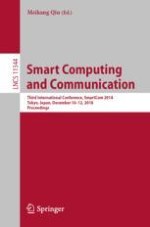2018 | Buch
Smart Computing and Communication
Third International Conference, SmartCom 2018, Tokyo, Japan, December 10–12, 2018, Proceedings
herausgegeben von: Prof. Meikang Qiu
Verlag: Springer International Publishing
Buchreihe : Lecture Notes in Computer Science
